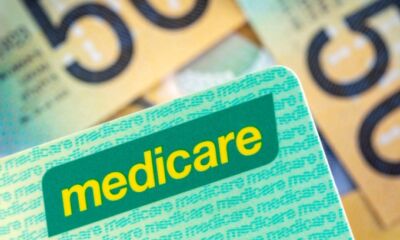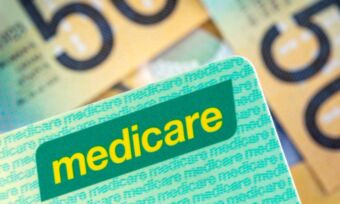What is the Medicare Levy Surcharge?

KEY POINTS
- The Medicare Levy Surcharge (MLS) is a tax surcharge applied to Australian taxpayers who have an annual income over a certain threshold and don’t have private hospital insurance.
- If you earn more than $97,000 before tax as a single person without children or $194,000 as a family in the 2024-25 financial year, you’ll generally have to pay the Medicare Levy Surcharge.
- You can avoid paying the Medicare Levy Surcharge by taking out an eligible private hospital insurance policy.
What is the Medicare Levy Surcharge?
The Medicare Levy Surcharge (MLS) is a tax surcharge applied to Australian taxpayers who have an annual income over a certain threshold and don’t hold an eligible private hospital insurance policy. It was introduced by the Australian Government to reduce demand on the public health system and encourage higher income earners to purchase private health insurance and utilise the private hospital system. By taking out private hospital cover you may be able to avoid paying the Medicare Levy Surcharge.
How much is Medicare Levy Surcharge?
This will vary by taxpayer depending on their income and family status. If you earn over the income threshold and don’t have an eligible private hospital insurance policy, you could be charged between 1%-1.5% of your taxable income—including fringe benefits and other applicable considerations.
How is the Medicare Levy Surcharge calculated?
The Medicare Levy Surcharge is calculated as a percentage of your income and is payable to the Australian Taxation Office (ATO) when you lodge your tax return. This rate ranges from 0% for those under the income threshold to up to 1.5% for those earning over $151,001 as a single person without children or $302,001 as a family.
Do I have to pay the Medicare Levy Surcharge?
Whether or not you have to pay the Medicare Levy Surcharge depends on your income. The ATO states that the definition of your ‘income’ for MLS calculation purposes includes your taxable income, plus some other considerations, such as fringe benefits, super contributions and, if applicable, your spouse’s income. The ATO’s website includes a full list of these considerations, as well as a calculator you can use to work out whether you’ll have to pay the MLS and, if so, how much you may have to pay. Generally speaking, you’re likely to pay the MLS if you:
- Don’t have the minimum level of hospital cover required and are part of a family earning more than $194,000 per year or
- are a single person without children earning more than $97,000 per year.
For a more detailed breakdown of the income brackets and the MLS rates that apply to them see the table below:
Medicare Levy Surcharge by income bracket for 2024-25
← Mobile/tablet users, scroll sideways to view full table →
| If your income is: |
||||
|---|---|---|---|---|
| Singles | ≤ $97,000 | $97,001 to $113,000 |
$113,001 to $151,000 |
≥ $151,001 |
| Families | ≤ $194,000 | $194,001 to $226,000 |
$226,001 to $302,000 |
≥ $302,001 |
| Your MLS is: |
0.0% | 1.0% | 1.25% | 1.5% |
Source: ATO, current as at July 2025 for the 2024-25 financial year.
 Psychiatric services
Psychiatric services
 Rehabilitation
Rehabilitation
 General dental
General dental
 Physiotherapy
Physiotherapy
 Psychiatric services
Psychiatric services
 Rehabilitation
Rehabilitation
 General dental
General dental
 Physiotherapy
Physiotherapy
 Psychiatric services
Psychiatric services
 Rehabilitation
Rehabilitation
 General dental
General dental
 Physiotherapy
Physiotherapy
 Psychiatric services
Psychiatric services
 Rehabilitation
Rehabilitation
 General dental
General dental
 Physiotherapy
Physiotherapy
 Psychiatric services
Psychiatric services
 Rehabilitation
Rehabilitation
 General dental
General dental
 Physiotherapy
Physiotherapy
 Psychiatric services
Psychiatric services
 Rehabilitation
Rehabilitation
 General dental
General dental
 Physiotherapy
Physiotherapy
Canstar may earn a fee for referrals from its website tables, and from Sponsorship or Promotion of certain products. Fees payable by product providers for referrals and Sponsorship or Promotion may vary between providers, website position, and revenue model. Sponsorship or Promotion fees may be higher than referral fees. Sponsored or Promoted products are clearly disclosed as such on website pages. They may appear in a number of areas of the website such as in comparison tables, on hub pages and in articles. Sponsored or Promoted products may be displayed in a fixed position in a table, regardless of the product’s rating, price or other attributes. The table position of a Sponsored or Promoted product does not indicate any ranking or rating by Canstar. For more information please see How We Get Paid.
How do you avoid paying the Medicare Levy Surcharge?
You can avoid paying the Medicare Levy Surcharge by having private hospital cover in place which includes all of the following, as a minimum, as listed on the PrivateHealth website:
- Private patient hospital cover
- provided by a registered health insurer
- with a maximum policy excess of $750 for singles and $1,500 for couples or families.
Compare health insurance with hospital cover
What’s the difference between the Medicare Levy and the Medicare Levy Surcharge?
It’s important to note the difference between the Medicare Levy and the MLS. As the Federal Government’s PrivateHealth website explains, the Medicare Levy is a tax applied to almost all taxpayers and, at the time of writing, is 2% of your taxable income. This helps fund Australia’s public health system. Depending on a range of factors, you may have to pay both the Medicare Levy and the MLS.
Costs comparison: Medicare Levy Surcharge vs private health insurance for the 25-26 financial year
It could be worth working out what MLS you could be paying and compare it to what a private health insurance policy would cost you, to see if there could be any savings to be made come tax time. The ATO has a ‘Medicare Levy Calculator’ that may assist with this process.
Canstar Research has analysed policies on our database, the results of which may help when comparing the MLS to the average cost of private health insurance.
It should be noted that the following data relates to the 25-26 financial year and uses both the MLS income thresholds and private health insurance rebate tiers for this financial year and will apply after 1 July 2025. The following is an estimate only.
Average national annual hospital insurance premiums by profile and hospital tier
← Mobile/tablet users, scroll sideways to view full table →
| Hospital tier |
Single policy |
Family policy |
|---|---|---|
| Basic | $1,070 | $2,129 |
| Basic Plus |
$1,230 | $2,542 |
| Bronze | $1,336 | $2,699 |
| Bronze Plus |
$1,480 | $3,005 |
| Silver | $1,838 | $3,712 |
| Silver Plus |
$2,417 | $4,824 |
| Gold | $3,653 | $7,207 |
Source: www.canstar.com.au – 18/06/2025. Based on hospital insurance policies on Canstar’s database. OSHC, visitor and corporate policies are excluded. The Australian Government Private Health Insurance Rebate, Tier 1 for under 65s, of 16.192% in Jun-25 has been applied to premiums. National average based on state averages weighted by proportion of hospital insured persons per APRA Quarterly Private Health Insurance (March 2025).
MLS vs health insurance: Hypothetical examples for the 25-26 financial year
Hypothetical example one:
Using ATO calculations for the 2025-26 financial year, if you’re part of a family with a combined income of $220,000 and don’t have private health insurance, then your MLS would be $2,200.
The average private health insurance premium on Canstar’s database at the time of writing for
- a family
- with Basic family hospital cover
- including a rebate of 16.192%
- costs $2,129.
Comparison (under these hypothetical conditions):
- MLS = $2,200.
- Private health insurance premium = $2,129.
Options to consider:
- Pay MLS and have no health insurance: Costs an extra $71/yr
- Buy health insurance and avoid the MLS: Saves $71/yr (with the added benefit of having private health insurance, but this doesn’t take into consideration any excesses you may have to pay when making a claim).
Hypothetical example two:
According to the ATO, if you’re a single person aged under 65 without private health insurance, and you earn between $101,001 and $118,000 for MLS purposes for the 2025-26 financial year, then the MLS you would pay would be 1% of your income. This would cost you between $1,010 and $1,180.
The average private health insurance premium (on Canstar’s database) for
- a single person
- with a Basic hospital policy
- including the rebate of 16.192% for those earning between $101,001-$118,000
- costs $1,070.
Comparison (under these hypothetical conditions):
- MLS = $1,010 to $1,180
- Private health insurance premium = $1,070
Options to consider:
- Pay MLS and have no health insurance: Ranges from a saving of $60 to costing $110 extra compared to the average Basic hospital policy.
- Buy health insurance and avoid the MLS: Ranges from costing an extra $60 to saving $110 (with the added benefit of having health insurance, but this does not take into consideration any excesses you may have to pay when making a claim).
 Psychiatric services
Psychiatric services
 Rehabilitation
Rehabilitation
 General dental
General dental
 Physiotherapy
Physiotherapy
 Psychiatric services
Psychiatric services
 Rehabilitation
Rehabilitation
 General dental
General dental
 Physiotherapy
Physiotherapy
 Psychiatric services
Psychiatric services
 Rehabilitation
Rehabilitation
 General dental
General dental
 Physiotherapy
Physiotherapy
 Psychiatric services
Psychiatric services
 Rehabilitation
Rehabilitation
 General dental
General dental
 Physiotherapy
Physiotherapy
 Psychiatric services
Psychiatric services
 Rehabilitation
Rehabilitation
 General dental
General dental
 Physiotherapy
Physiotherapy
 Psychiatric services
Psychiatric services
 Rehabilitation
Rehabilitation
 General dental
General dental
 Physiotherapy
Physiotherapy
Canstar may earn a fee for referrals from its website tables, and from Sponsorship or Promotion of certain products. Fees payable by product providers for referrals and Sponsorship or Promotion may vary between providers, website position, and revenue model. Sponsorship or Promotion fees may be higher than referral fees. Sponsored or Promoted products are clearly disclosed as such on website pages. They may appear in a number of areas of the website such as in comparison tables, on hub pages and in articles. Sponsored or Promoted products may be displayed in a fixed position in a table, regardless of the product’s rating, price or other attributes. The table position of a Sponsored or Promoted product does not indicate any ranking or rating by Canstar. For more information please see How We Get Paid.
When is the Medicare Levy Surcharge deadline?
The Medicare Levy Surcharge is applied each financial year when you lodge a tax return. If your private hospital cover starts after 1 July of a particular financial year, the surcharge will only be applied for the period in which you didn’t have cover.
If I change or suspend my hospital cover, will I be charged the Medicare Levy Surcharge?
If you change your private hospital insurance provider or suspend your cover you will be liable for the Medicare Levy Surcharge if there’s a gap between when one policy ends and a new one begins and you’re earning above the income thresholds.
Do non-Australian residents have to pay the Medicare Levy Surcharge?
Non-Australian residents may be subject to the Medicare Levy Surcharge if they’re considered Australian residents for tax purposes or are Medicare eligible. Medicare eligibility is often granted by a Reciprocal Health Care Agreement (RHCA), meaning if you’re a citizen of the UK, Sweden, Finland, Norway, Belgium, The Netherlands, Slovenia, Malta, Italy, Ireland, or New Zealand you may be Medicare eligible. If you earn over the Medicare Levy Surcharge threshold and don’t have a hospital cover policy in this case, you may have to pay the Medicare Levy Surcharge.
It’s important to note that Overseas Visitors Health Cover (OSHC) and working visa health cover aren’t considered a sufficient degree of private health cover to afford you exemption from the Medicare Levy Surcharge.
Foreign citizens who aren’t Medicare eligible or Australian residents for tax purposes can complete a Medicare Entitlement Statement to exempt themselves from paying the Medicare Levy Surcharge.
Talk to a health insurance specialist to find the policy that suits your needs
This article was reviewed by our Finance Editor Jessica Pridmore before it was updated, as part of our fact-checking process.

Nick’s role at Canstar allows him to combine his love of the written word with his interest in finance, having learned the art of share trading from his late grandfather. Nick strives to deliver clear and straightforward content that helps the everyday consumer navigating the world of finance. Nick is also working on a TV series in his spare time. You can connect with Nick on LinkedIn.
- What is the Medicare Levy Surcharge?
- How much is Medicare Levy Surcharge?
- How is the Medicare Levy Surcharge calculated?
- Do I have to pay the Medicare Levy Surcharge?
- How do you avoid paying the Medicare Levy Surcharge?
- What’s the difference between the Medicare Levy and the Medicare Levy Surcharge?
- Costs comparison: Medicare Levy Surcharge vs private health insurance for the 25-26 financial year
- MLS vs health insurance: Hypothetical examples for the 25-26 financial year
- When is the Medicare Levy Surcharge deadline?
- If I change or suspend my hospital cover, will I be charged the Medicare Levy Surcharge?
- Do non-Australian residents have to pay the Medicare Levy Surcharge?
 Psychiatric services
Psychiatric services
 Rehabilitation
Rehabilitation
 General dental
General dental
 Physiotherapy
Physiotherapy
Try our Health Insurance comparison tool to instantly compare Canstar expert rated options.
Talk to a health insurance specialist to find the policy that suits your needs






